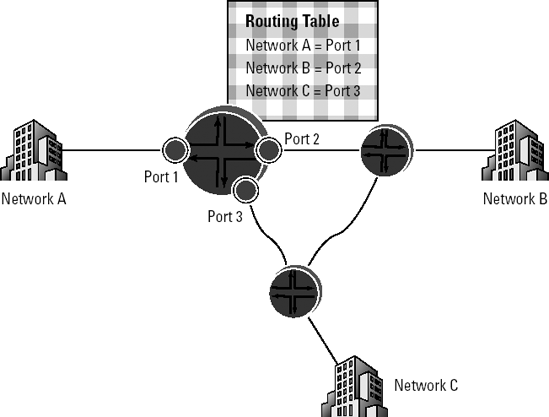Chapter 4. Ramping Up to Routing
Routing is the process of selecting paths through the network. Routers (and Layer 3 switches — see Chapter 3) then use this routing information to pass IP addressed packets through a network of nodes from their source to their destination. Here, we introduce the basics of routing. (Chapter 8 helps you to get routing up and running).
This chapter also takes a peek at MPLS, which can be useful in very large private backbone networks — not to mention the networks of your service providers.
The View, Routing Style
The role of routing is to select paths, one step at a time, in a network or across a network of networks. Each device knows the next step (the next hop, in IP networking lingo) to send each packet on its journey. Any switch or router that performs routing is a Layer 3 device because it can forward traffic along these end-to-end paths. Each Layer 3 device knows where to forward each incoming packet for all reachable destinations, a process known as hop-by-hop routing (see Figure 4-1).
Tip
Switches are a good, cost-effective solution for routing within a building or a nearby group of buildings. Juniper's switches require no additional licensing to use the most common Layer 3 features. This approach offers you more flexibility in choosing where to use Layer 3 networking within your switching infrastructure.

Figure 4-1. In hop-by-hop routing, routing protocols ...
Get JUNOS® FOR DUMMIES® now with the O’Reilly learning platform.
O’Reilly members experience books, live events, courses curated by job role, and more from O’Reilly and nearly 200 top publishers.

